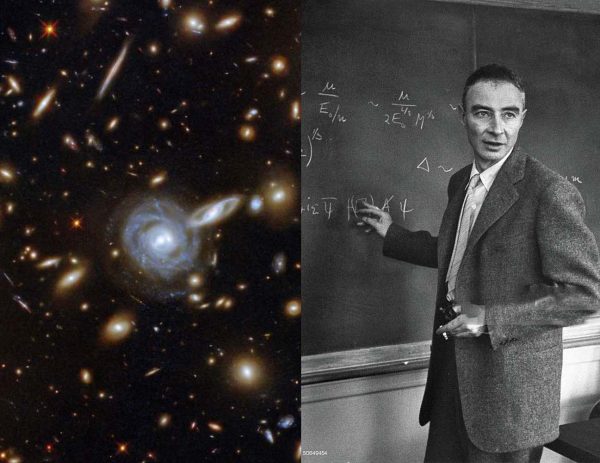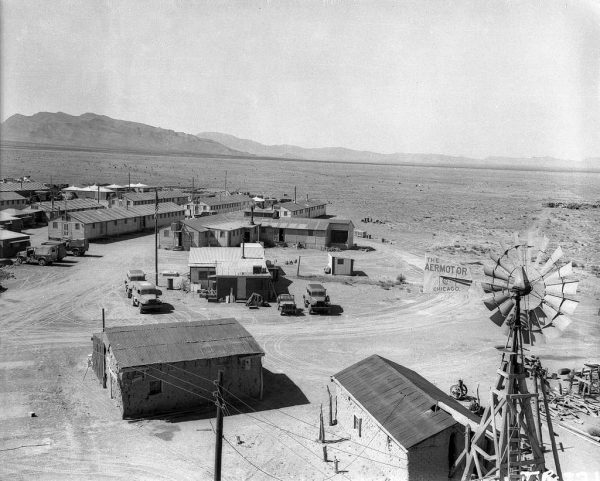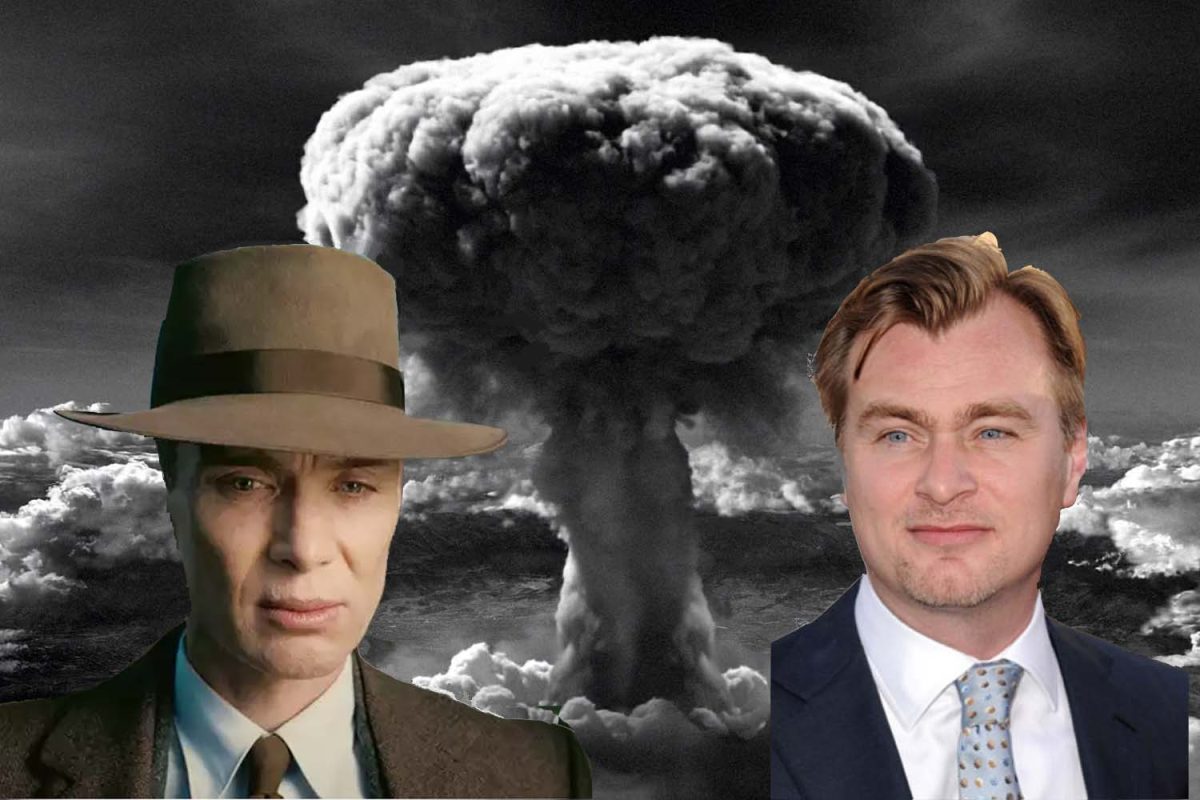Mr. Christopher Nolan released his three-hour period film Oppenheimer July 21 to much commercial success, according to collider.com. The film chronicles the life of theoretical physicist Mr. J. Robert Oppenheimer, from his education in Europe to his leadership of the Manhattan Project and a trial in which he faced allegations of communist behavior in the post-World War II era. Although some praised the film for its potent depiction of a complex, influential figure, other experts criticized Mr. Nolan for failing to represent the effects of the atomic bomb on Japanese citizens, according to nbcnews.com. The film’s detachment from the consequences of the atomic bomb offers a critique of governmental and personal aloofness to violence in search of power and prestige.
Oppenheimer opens with artistic visuals of space. The audience visualizes the universe’s magnitude and magnificence, which evokes a sense of fascination with the patterns of physics. Consequently, this technique centers the viewer’s perspective on a search for curiosity rather than a connection to the human characters in the film.

Mr. Nolan introduces the biopic’s central characters through a lens of pessimism, further detaching the audience from the emotional core of the film. The viewer’s first window into Mr. Oppenheimer is through his attempted poisoning of his school teacher, after the latter prohibits the protagonist from attending a lecture by prominent physicist Mr. Niels Bohr. In establishing Mr. Oppenheimer’s emotional instability and insatiable hunger for knowledge, Mr. Nolan fosters a setting that rewards cunning and punishes morality.
The filmmaker acknowledged Mr. Oppenheimer’s ambition as the driving force behind his historical relevance and persona in the film. Mr. Nolan noted that it was the scientist’s demeanor rather than his genius that made him influential.
“I think Oppenheimer’s ambition exceeded his intellect, even though he was one of the most brilliant people. He wasn’t the best mathematician. He wasn’t the top quantum physicist. He was in the top, but he wasn’t the actual top,” Mr. Nolan said, according to The New York Times. “But his ambition was to be the best, the most famous. I think that quality of ambition coupled with his understanding of scientists, he knew all of them. He was a very charming person.”
It is this narrow focus on the accomplishments of Mr. Oppenheimer that draws strong criticism from experts in Japanese culture and history. Some feel that by excluding the voices and stories of the Japanese in the consequences of the atomic bomb, Mr. Nolan perpetuates the glorification of white male scientists whose work caused the suffering of other people. Ms. Nina Wallace, social media manager and community outreach correspondent at Densho, a nonprofit organization centered on preserving the stories of Japanese Americans incarcerated during World War II, noted her frustration with the film industry’s focus on traditionally powerful people rather than those removed from those narratives.
“It is true that these institutions that are in positions of power, positions of influence, put more value on stories of men like Oppenheimer, Truman, than it does on the Asian and indigenous communities that suffer because of decisions those men made,” Ms. Wallace said, according to nbcnews.com.
Indeed, the first half of Mr. Nolan’s film concerns itself, like Mr. Oppenheimer, with establishing and exposing the projects and growth of its characters rather than the implications of their work. Mr. Oppenheimer develops from an undergraduate student at the University of Cambridge to the leader of the Manhattan Project, where a desire to win the war and build his own reputation fuels his every move. However, after the defeat of the Nazis, Mr. Nolan introduces a jarring tonal shift, forcing the audience to reevaluate the media they have been consuming.
After his team finishes the atomic bomb, Mr. Oppenheimer’s lack of power becomes evident in the story. He no longer has control of his work, and, despite the German withdrawal from the war, President Harry S. Truman decides to drop the two atomic bombs on Japan, belittling Mr. Oppenheimer for his opposition to the bombing.

Mr. Nolan removes the previous motifs of chalkboards with complex equations and replaces them with calculations on the devastation of nuclear weapons. Similarly, he substitutes brutal renderings of atomic violence for the previously peaceful visions of the universe. Mr. Oppenheimer’s fate in his security trial against communist charges, which plays out in parallel to the main story, becomes increasingly grim. His morality, too, becomes shaken as he struggles to reconcile with the horrific consequences of his invention. His wife, Mrs. Kitty Oppenheimer, becomes mentally unstable, and her addiction to alcohol worsens. The film becomes concerned with the effects of its characters’ actions only when it is too late to reverse their impact.
Mr. Nolan evokes this fearful and pessimistic sensation from the audience to elicit thoughtful consideration about personal and governmental innovation. He channels viewers’ distaste at the actions of his characters into a reconsideration of their own participation in innovation at the expense of others.
Mr. Nolan considers Mr. Oppenheimer to be the man who shaped the modern world, according to The New York Times. Ultimately, although Mr. Nolan lauds the ambition and genius of his protagonist, he acknowledges that Mr. Oppenheimer’s genius comes from a lack of social awareness that plagues the physicist’s legacy.
“He could be accused of naïveté in a lot of ways, but it’s the sort of naïveté, the mistakes he made were the sort of mistakes that only the most brilliant strategic people could make, because they think they’re smarter than everybody else,” Mr. Nolan said, according to The New York Times. “They don’t necessarily read the room exactly as they should.”
The same criticism Mr. Nolan ascribes to Mr. Oppenheimer applies to himself as well. It is his own naïveté in excluding Japanese and indigenous communities from a narrative that directly caused their suffering that tarnishes his film for some audiences.
Yet, it is through this exclusion of Japanese and indigenous voices from Oppenheimer that the audience reconsiders the government and Mr. Oppenheimer’s mistreatment of these marginalized groups. Although Mr. Nolan’s film is undoubtedly imperfect, it serves as a medium for its viewers to face the consequences of their own curiosity and reliance on institutions.
The film’s juxtaposition between the thrill of ambition and its consequences forces its spectators to acknowledge when they themselves have detached morality from their accomplishments to the detriment of others. Oppenheimer is a deeply human film. Audiences love watching heroes rise and fall, but they struggle to reckon with the casualties from these narratives. Mr. Nolan may be disinterested in depicting the aftermath of extreme violence, but he is fascinated by its indirect effects on the general public and what it means when humans cannot undo the damage they have wrought.
Featured Image by Lindsay Taylor ’24




